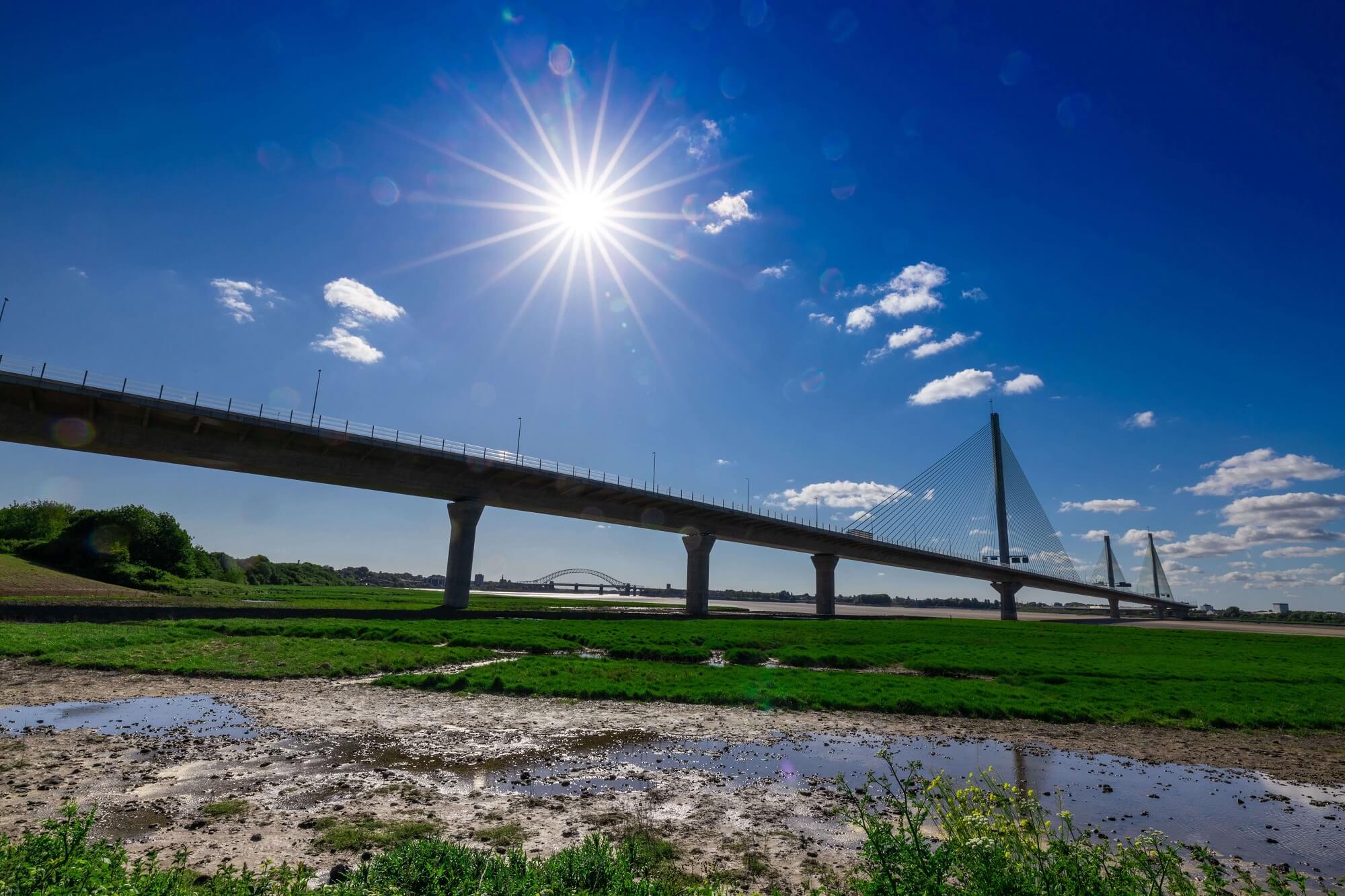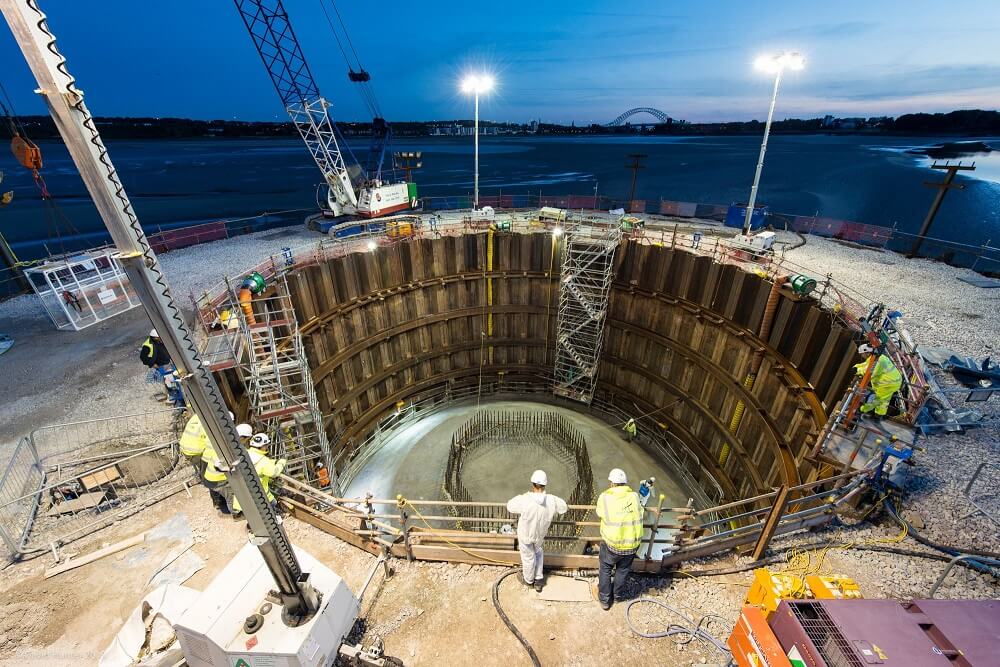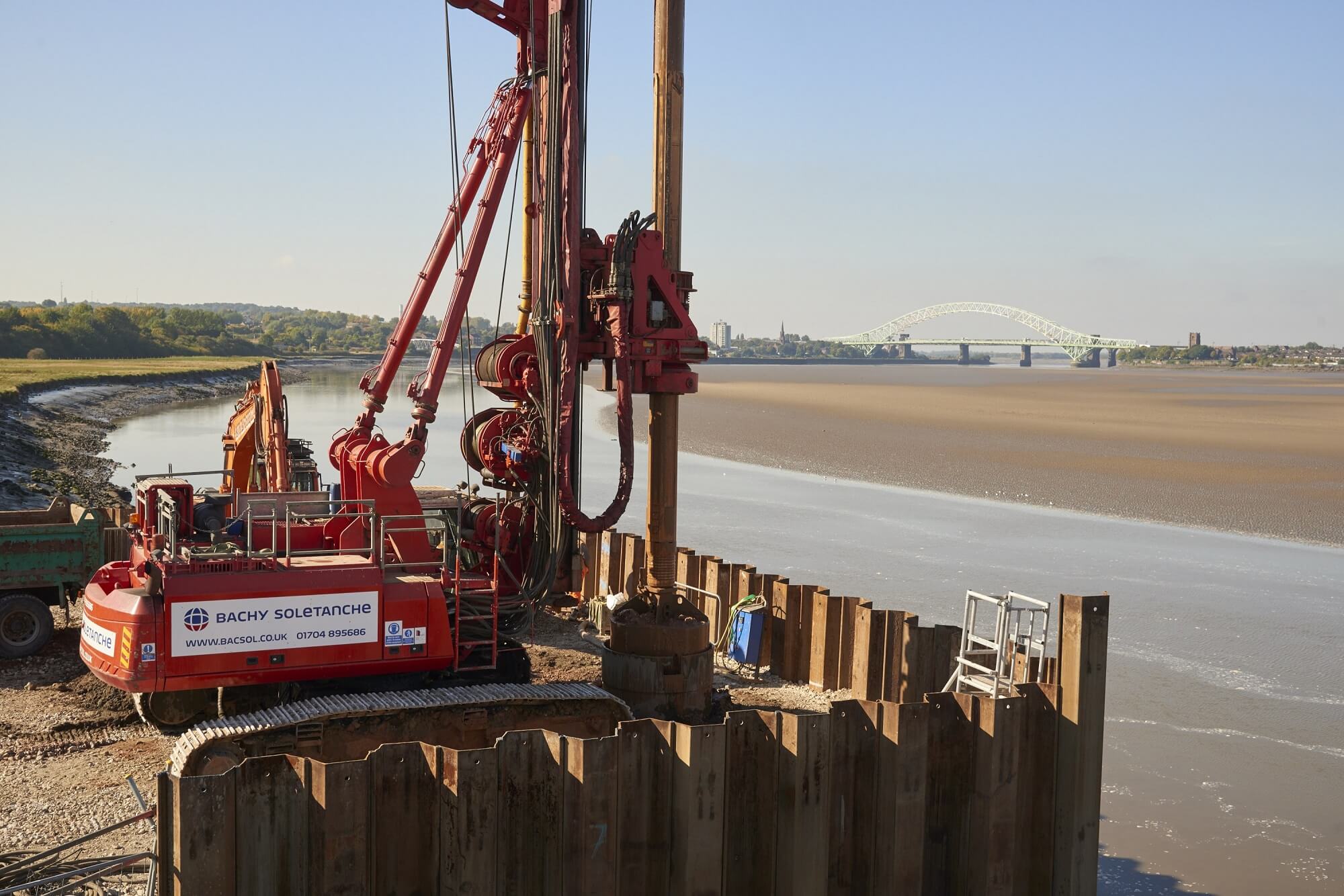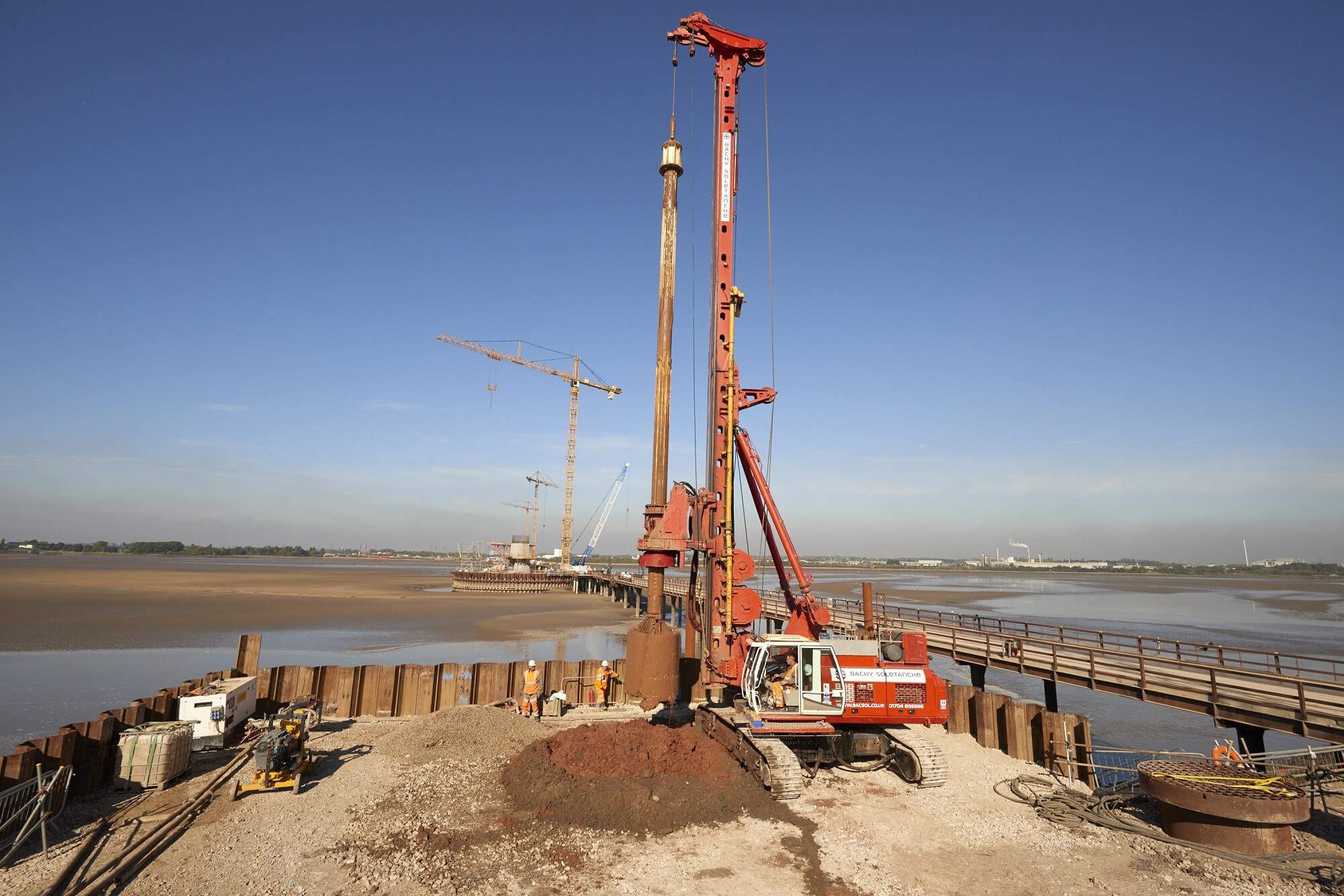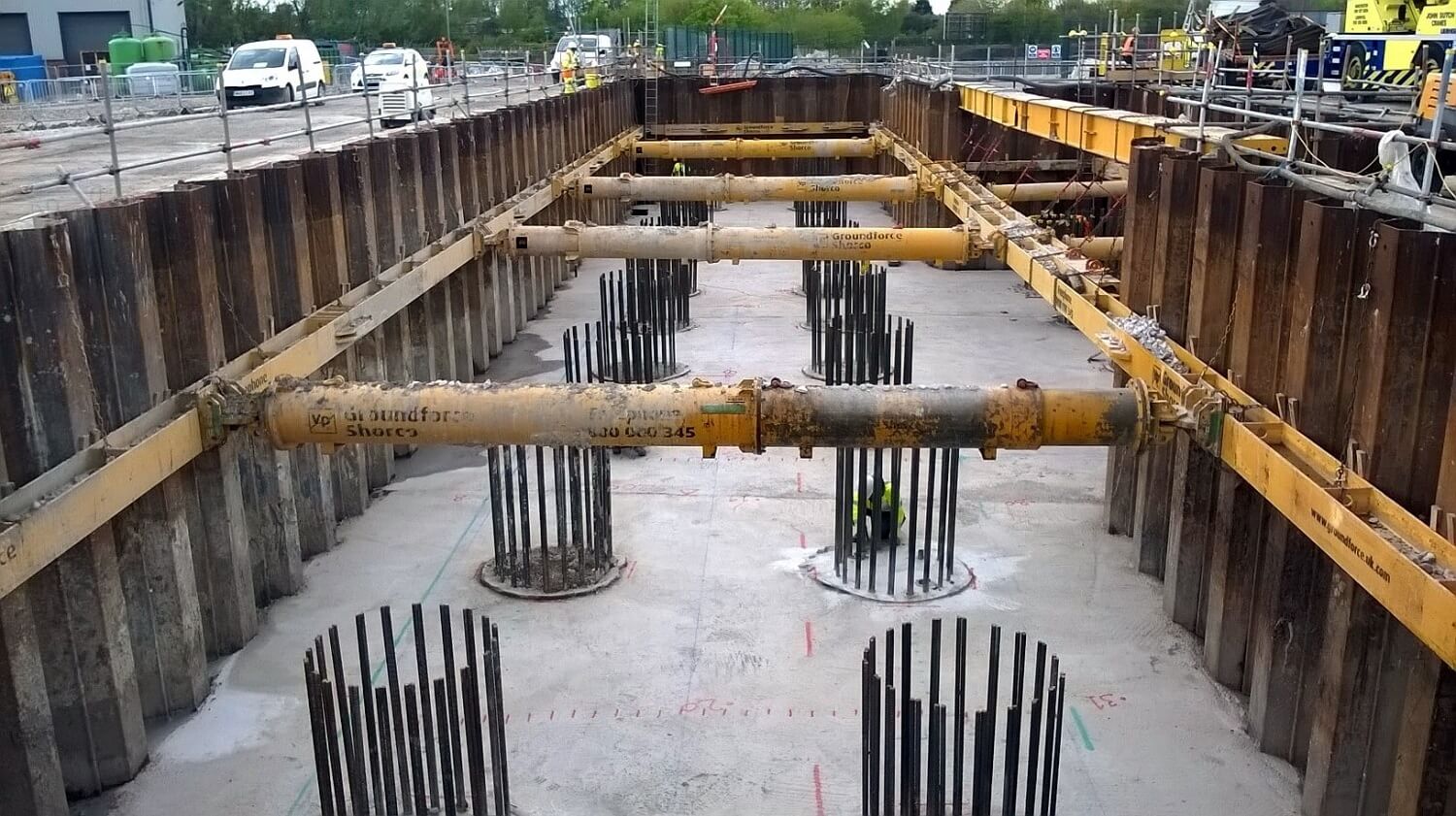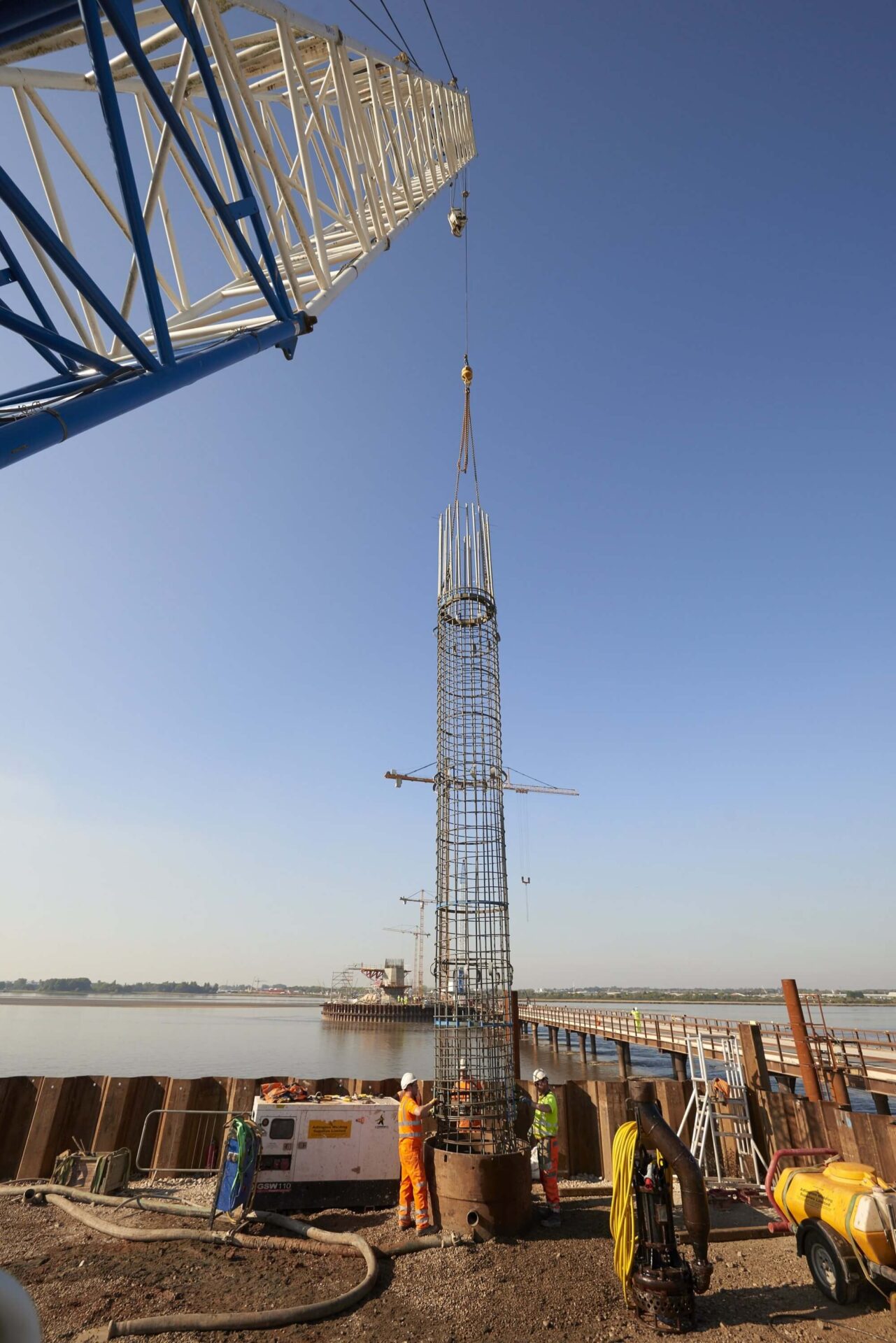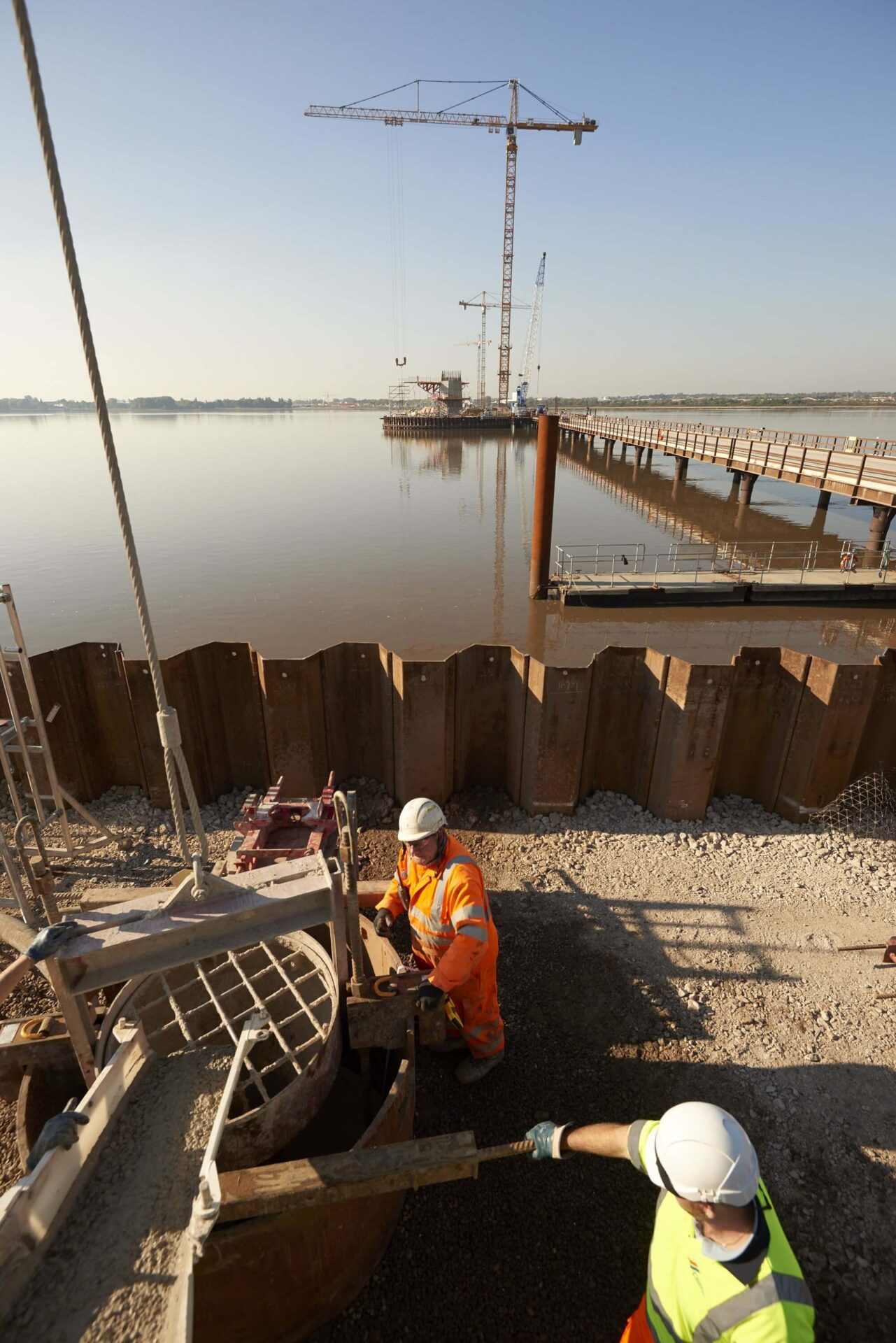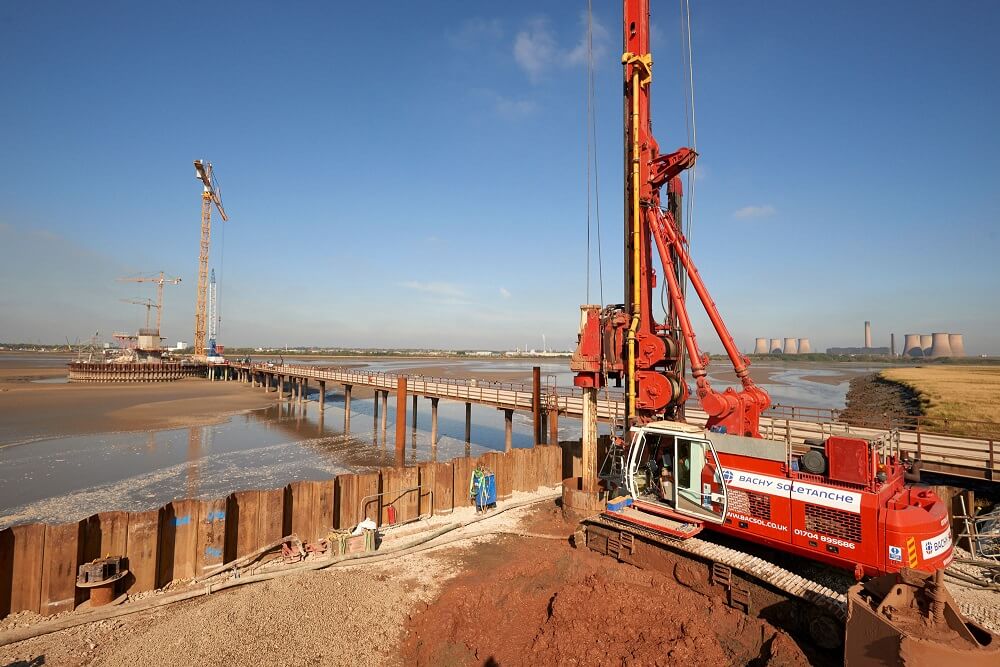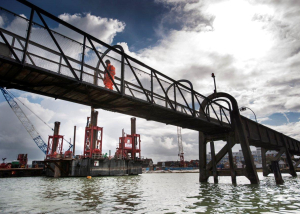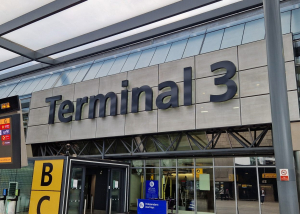PROJECT OVERVIEW
The Mersey Gateway Bridge is a six-lane crossing that runs between Widnes and Runcorn. The £600m project was required to alleviate traffic congestion on the ageing Silver Jubilee Bridge.
CONSTRUCTION
The construction of the Mersey Gateway Bridge required installation of rotary bored piles at the bridge’s North Approach Viaduct abutment and piers, South Approach Viaduct piers, the Astmoor and Bridgewater approach viaduct piers, as well as the use of Movable Scaffold System support piles. The rotary bored piling consisted of 160 1,500mm LDA piles at a depth of between 23m and 55m, along with 300 1,050mm at a depth of between 20m and 30m.
Additionally, the project required the installation of 370 cased secant piles, with a diameter of 636mm, bored to depths of up to 12.5m. The secant walls formed two cofferdams for the North Approach Viaduct piers and two cofferdams for piers adjacent to the Manchester Ship Canal at the South Approach Viaduct. CFA piling on the site consisted of 240 CFA piles of 600mm diameter at depths of between 20m and 32m.
The high profile, large-scale project, which required the use of a Bauer BG39, two Bauer BG24’s and a Soilmec SF120 rig, offered a number of challenges and obstacles which included; having to limit impact to local environment and wildlife, navigate around the River Mersey site and work around a 40-tonne weight limit over the Manchester Ship Canal swing bridge.
There was also a requirement to tanker bentonite to piers at both the Manchester Ship Canal and Pier 15 at Astmoor, due to a lack of access for bentonite lines. Elsewhere on site, bentonite was pumped through four lines, in excess of 700m from plant to piles, through lines installed under the Astmoor Industrial Estate dual carriageway and bus lanes.
